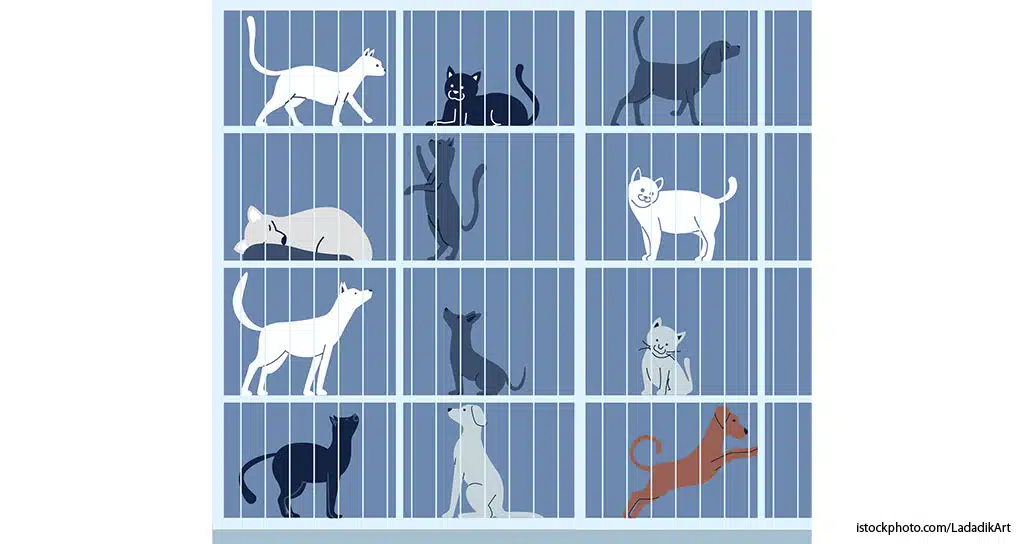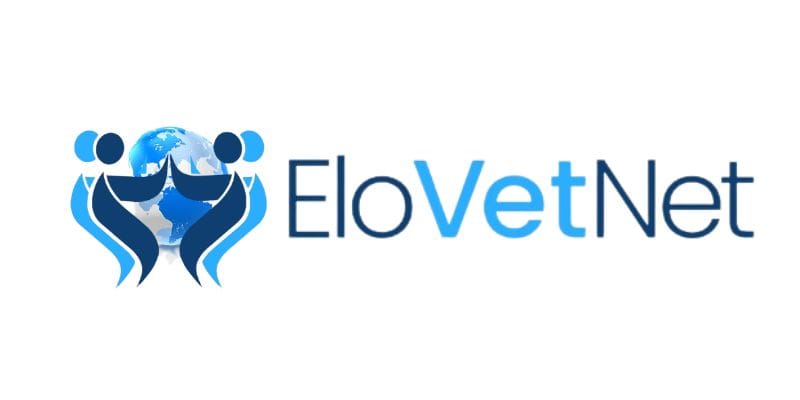
The Disruptive Dozen
Current and future changes will support the veterinary workforce better, expand access to care, and improve pet and family lives.
The old model of veterinary care that brought our success today is bending under increased demands and expectations.
Creative Disruption, the title of this column, takes a provocative, solution-oriented and collaborative approach to probing topics of interest to our beloved profession. I’ve said it before and will repeat it: There has never been a better time to be a veterinary professional, the human-animal bond has never been stronger, and pets’ unconditional love has never been more appreciated than by today’s owners.
That said, the old model of veterinary care that brought our success today is bending under increased demands and expectations. For our profession to continue to enjoy the status we’ve earned — veterinarians rank second only to human nurses as the most honest and ethical professionals, per Gallup — we must evolve to meet the changing needs of today’s and tomorrow’s consumers. Some of us fear change, and many view it as bad. However, I’m reminded of this quote from author Barbara Kingsolver: “The change we dread most may contain our salvation.”
Sticking with the theme of creative disruption, I am tracking a dozen changes within our profession, some promising significant disruption in the near term and some that might take years to make a meaningful impact. I choose optimism. While change comes with uncertainty, I’m certain that without change, we can’t get better. My take on the disruptive dozen follows.
1. New Veterinary Schools
I’m thrilled to see the emergence of new schools and education models. As a past site visitor for the Council on Education, the accrediting body for veterinary schools, I recall our training on the 11 accreditation standards. We learned that the 11 standards are not prescriptive. Schools need only achieve the standard, but how they do it is up to them. That is a wise approach because it allows for innovation and continuous improvement. That said, I fear the COE is becoming more prescriptive, as shown by recent changes to the standards. As the standards become prescriptive, each school begins to look the same, and we stifle the innovation necessary to improve the model. We run the risk of institutional isomorphism. Today, more than ever, we must innovate the educational model to keep pace with rapid technological changes, the increasing demand for graduates and the faculty shortage.
2. Veterinary Professional Associates
Work is underway to develop a licensing exam for these midlevel providers. An accrediting body has been identified, and more schools are interested in a master-level VPA program. Just as the introduction of nurse practitioners and physician assistants in human medicine didn’t diminish the role of physicians or nurses, the VPA doesn’t threaten the status or livelihood of veterinary doctors and credentialed veterinary technicians. We can expect the VPA role to provide additional fulfilling careers and allow for better access to pet care. Over 50 years ago, after initial opposition, the American Medical Association recognized physician assistants. Look for the same in the veterinary profession.
3. New Practice Models
Examples include dental exclusive, urgent care, nurse/technician driven, concierge, virtual and membership only. We’re moving from all creatures great and small, every condition, every day to focusing on one care segment. Doing so provides more choices for consumers and providers and lowers the barriers to care.
4. New Provider Lanes
In addition to VPAs, how about advanced primary care practices focused on specific disciplines like orthopedics, behavior, reproduction and dentistry? Consider it a middle space between general practitioners and board-certified specialists. This approach offers an alternative to pet owners unable to afford specialty care and takes some of the load off overwhelmed boarded specialists. These providers exist, so how can we best certify, recognize and embrace them?
5. Expanding the GP’s Scope
A pet family’s needs are not always best met by veterinary referrals. Economic roadblocks might necessitate care by the primary care provider. General practitioners, don’t be afraid to expand your scope of practice. Refer where appropriate but be open to offering more. You got this!
6. Spectrum of Care
While not a new concept, the spectrum of care aims to address the growing challenge of affordability. Estimates show that half of all U.S. pets won’t visit a veterinarian this year. The main culprit is the cost of care. Do outcomes differ between gold-standard care and a more value-conscious standard? Are we discouraging care by inadvertently shaming clients by overprescribing gold-standard care? Should we, as providers, feel guilty when we don’t offer gold-standard care? Color me guilty. A spectrum-of-care approach better addresses clients of limited means. Let’s meet the client and the patient where they are.
7. Empowering Credentialed Veterinary Technicians
The CrVT is at the center of team-based care. License protection, expanded duties and fair compensation are overdue for these remarkable professionals. Did you know that 5 million nurses care for about 330 million people in the United States? Contrast that with fewer than 100,000 CrVTs caring for 180 million pets. Trust your CrVTs.
8. Team-Based Care
Post-COVID, a team-based approach to care is gaining traction, replacing the old model of one doctor, one exam room and one patient every 20 minutes. Veterinary medicine is learning what other health care professions figured out decades ago: Good care delivery is a team sport.
9. Practice Consolidation
We’re in the middle innings of the consolidation cycle. Thankfully, the early-inning arbitrage players looking to buy veterinary practices at 1X valuation, invest nothing in them, hold for them for as short a period as possible and flip them at 2X are gone. The current middle-inning consolidators understand that investing in buildings, training, equipment, culture and well-being is critical to a practice’s success. Stay tuned for the final inning when interest rates drop, IPOs take place and a few strategic investors acquire the rest of the consolidators. If the distance between the boardroom and the exam room is short and veterinary professionals have a seat at the decision-making table, consolidators will succeed.
10. Telemedicine
The virtual veterinarian-client-patient relationship is a no-brainer for legislators, who understand the value of remote care nearly unanimously. A Colorado survey found that over half of pet owners would be comfortable with virtual care. Trust your colleagues to decide when it’s appropriate. If you’re uncomfortable providing virtual care, you don’t have to.
11. Personal Well-Being
We’ve seen a much-needed focus on well-being in our profession over the past decade. I was encouraged after I saw the 2023 Merck Wellbeing Study, in which almost three-fourths of veterinary professionals expressed career satisfaction. Most (92%) noted that they are invested in their work and take pride in doing a good job. We must care for ourselves before we can care for others.
12. Technological Advancements
Today’s early steps in artificial intelligence include voice-to-text charting of medical records, image analysis, laboratory test interpretation and improved client communication. Imagine veterinary care that might not require a physical hospital. Imagine a future with home diagnostics, remote monitoring, 3D-printed organs, robotic surgery and predictive medicine. Exciting times await us.
An old joke comes to mind. Question: What are the two things people hate most? Answer: The way things have always been done and change.
Be open to change. Our future is bright.

Comentários